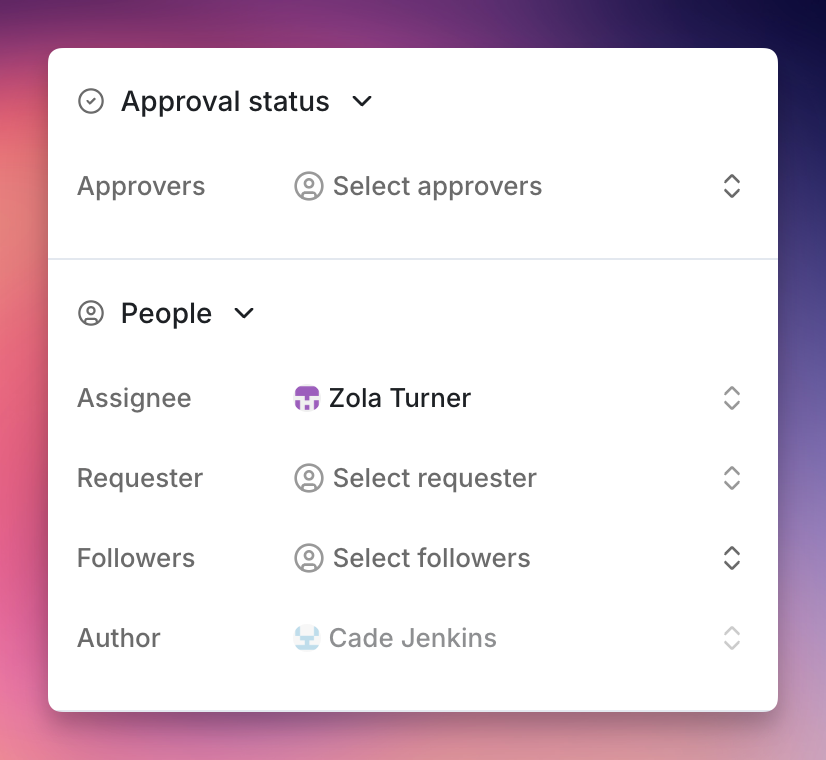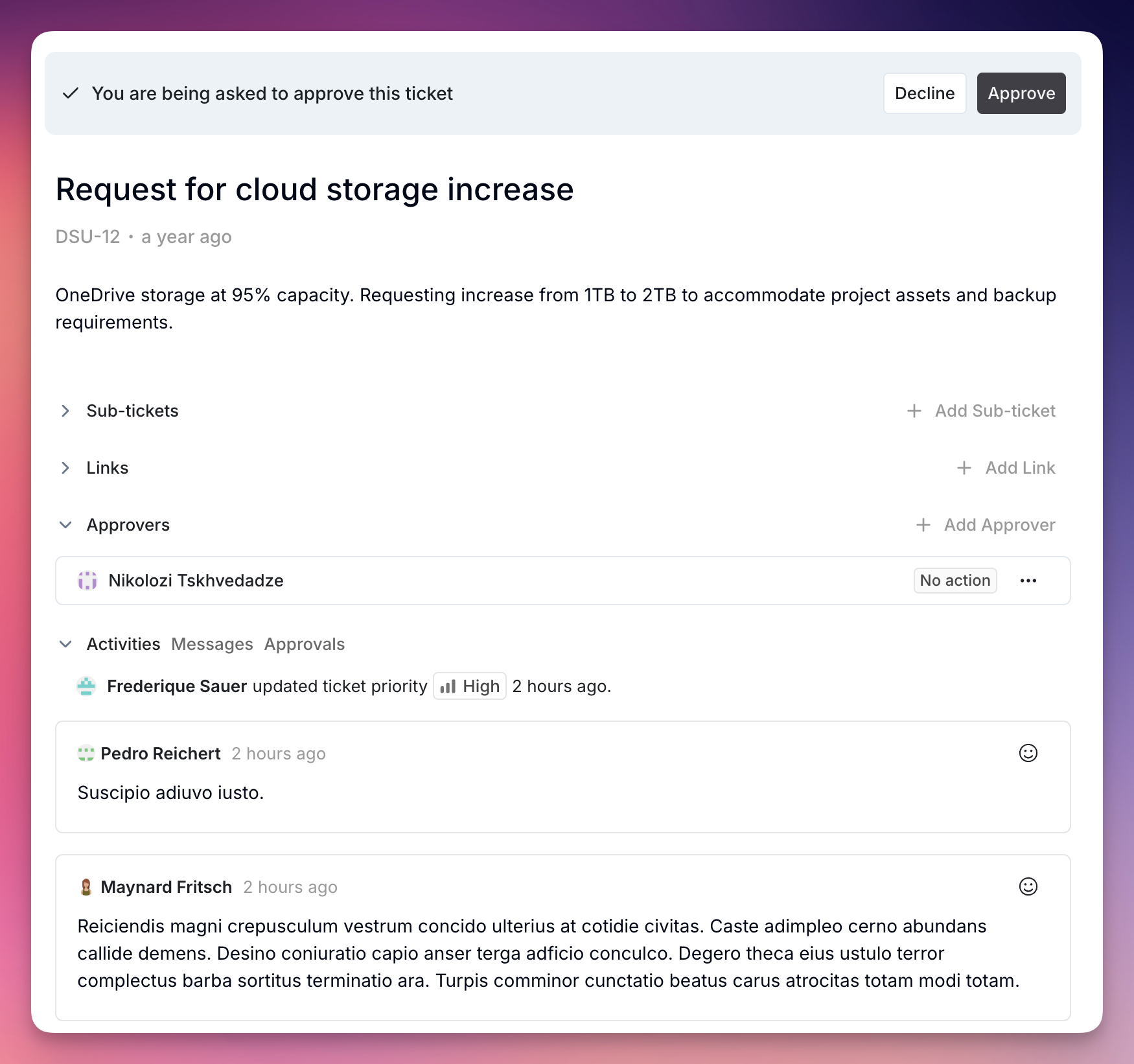
Requester
The Requester is the person who originally requested help or submitted the ticket. This is typically the end user who needs assistance.Key Characteristics
Each ticket can have only one requester, who is automatically assigned when the ticket is created from a Slack message or form submission. The requester receives updates about ticket status changes and new messages throughout the ticket lifecycle.Author
The Author is the person who physically created the ticket in Ravenna. This may be the same person as the requester or a different user acting on behalf of the requester.Key Characteristics
Each ticket has one author who cannot be changed once the ticket is created. The author remains fixed throughout the ticket lifecycle.Common Scenarios
In self-service scenarios, the author and requester are the same person. For proxy creation, a support agent creates the ticket on behalf of a user who needs help. During escalation, a manager creates a ticket for a team member’s issue that requires formal tracking.Author vs Requester
The author is the person who created the ticket record in Ravenna, while the requester is the person who the ticket is for (the person needing help). In most self-service scenarios, they are the same person. However, they are different people when someone creates a ticket for another user.Assignees
The Assignee is the person responsible for working on and resolving the ticket. This role can be changed throughout the ticket lifecycle as work is transferred between team members.Key Characteristics
Each ticket can have only one assignee at a time, but this can be changed as work progresses. Tickets can exist without an assignee, and the assignee receives updates about ticket changes and new messages.Assignment Methods
Manual Assignment
Assign tickets from the ticket detail page, or use bulk operations to assign multiple tickets at once from ticket lists. You can also assign tickets directly from Slack.Automatic Assignment
- Queue auto-assignment: Configure queues to automatically assign tickets to specific users
- Round-robin: Distribute tickets evenly among team members
- Workflow automation: Use workflows to assign tickets based on conditions
Self-Assignment
Use the “Assign to me” quick action button for users to assign tickets to themselves. This option is available in ticket details, ticket lists, and Slack.Unassigned tickets remain in the queue until manually assigned or picked up by team members.
Followers
Followers are users who need to stay informed about ticket progress but aren’t directly responsible for resolving it. Multiple users can follow a single ticket.Key Characteristics
Any number of users can follow a ticket and receive updates about ticket changes and new messages. Followers can be added or removed at any time, but following doesn’t grant additional ticket access.Managing Followers
Adding Followers
Add followers from the ticket detail page, or use workflows to automatically add followers based on conditions.Automatic follower addition via mentions: When you @mention a user in a ticket message (from Slack or the web app), they are automatically added as a follower. This works for both new messages and message edits.The system intelligently filters out:
- Users already following the ticket
- The ticket’s requester and assignee
- Bot users
- The message author
Removing Followers
Users can remove themselves from following tickets, and workflows can remove followers when conditions are met.Notification Settings
Followers receive DM notifications for ticket updates through Slack. You can also configure email preferences for follower updates.Following a ticket is a great way to stay informed without being directly responsible for resolution.
Approvers
Approvers are users who have the authority to approve or decline tickets before work can proceed. This role is essential for workflows requiring authorization.Key Characteristics
Tickets can have multiple approvers who can approve or decline tickets. Approvals can trigger automated actions through workflow integration, and approvers receive special notifications and reminders.Approval Process
Approval States
- Pending: Ticket awaits approval decision
- Approved: At least one approver has approved the ticket
- Declined: At least one approver has declined the ticket
Approval Actions
Approvers can approve the ticket to allow it to proceed, decline it with an optional reason, or remove their previous approval decision.

